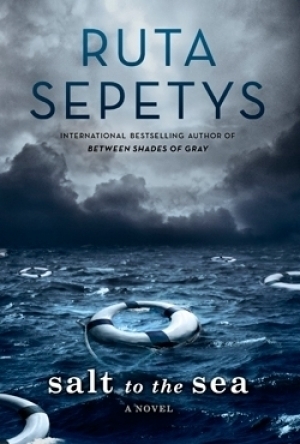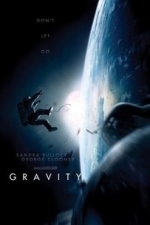
50 Museums to Blow Your Mind
Lonely Planet and Ben Handicott
Book
Thank the stars for the world's eccentric collectors; hoarders of objects beautiful, strange or...

TrackaShip Universal
Navigation and Travel
App
Ever wondered what ship it is you see passing a few miles off the beach?? This App gives you the...

TrackaShip - Free Ship Finder & Marine Traffic
Navigation and Travel
App
Ever wondered what ship it is you see passing a few miles off the beach?? This App gives you the...

Weather4D 2.0
Weather and Navigation
App
Weather4D 2.0 is a powerful application for maritime chart navigation and weather routing. ...
Hazel (1853 KP) rated Salt to the Sea in Books
Dec 17, 2018
“We survivors are not the true witnesses. The true witnesses, those in possession of the unspeakable truth, are the drowned, the dead, the disappeared.” </i>– Primo Levi
World War Two has got to be the most well known and talked about period of history. Despite it not even being a century ago, it is already taught in schools around the globe. However a lot of events are omitted from our history books. A lot of people, including those alive at the time, have no idea of some of the situations Europeans found themselves in. Ruta Sepetys, despite having only previously written two novels, has become known for her stories about the lesser-known aspects of the Second World War. Her third book, <i>Salt to the Sea</i>, is no different.
In 1945 things were not looking great for the people living in Germany. Their greatest concern was the invading Russian army, resulting in thousands of Germans evacuating their hometowns. Four characters in their late teens/early twenties narrate <i>Salt to the Sea</i>: Joana, Florian, Emilia and Alfred. Their varied nationalities – Lithuanian, Prussian, Polish and German – help provide a range of opinions about the war, but regardless of who they believe to be the enemy, whether it be German or Russian or both, they are all figuratively in the same boat.
Joana, Emilia and Florian meet each other amongst a group of refugees trekking to freedom. A lot of trust is involved especially as no one is willing to reveal his or her true story. It is clear that each character is hiding something personal, something to do with the war, yet they all rely on and help each other to continue on their journey.
Naturally, being a war story there is masses of death and destruction. Set in January, the weather conditions are just as dangerous as the Russian soldiers. It is the end of the novel that contains the most shocking of events: a sinking of a ship that kills 9000 passengers. The most severe maritime disaster ever, yet it is doubtful that readers already know about it.
Despite being a work of fiction, Sepetys sticks to the facts in her heavily researched novel. She shocks the reader with the severity of the situation, and may even bring some to tears with the outcome. She has not sugar coated anything. Some storytellers save the innocents from harm, but this was not the case in <i>Salt to the Sea</i>. In war, no one can choose who lives and who dies. Millions of innocent people perish.
The short chapters keep the story flowing quickly. It is shocking, gripping and engaging. There is a brief notion of romance but this is not focused on and thus does not detract from the factual storyline. There was a hinted connection between characters in this novel and those in <i>Between Shades of Grey </i>– one of Sepetys’ earlier novels, however this is not a sequel or part of a series.
With the help of maps showing the difference between Europe now and Europe in 1945,<i> Salt to the Sea</i> is highly educational. Although aimed at young adults it is suitable for older generations as well. Whilst containing shocking content, you are certain to fall in love with Sepetys’ writing.

Weather4D Pro
Weather and Navigation
App
Weather4D PRO is the first application to use the power of GPU for iPad and iPhone to animate the...
Gareth von Kallenbach (980 KP) rated Gravity (2013) in Movies
Jun 19, 2019
The premise is focused and simple for the betterment of the film. Sandra Bullock plays Ryan Stone, a scientist who is on her first space walk installing new components onto the Hubble telescope. She is accompanied by George Clooney’s character, Kowalski, an experienced astronaut who’s calm in crisis helps guide the frightened Bullock through the following events. A massive accident leaves the characters stranded in space with no way home, periled by the hazards that go with being stuck in the abyss.
At its core, Gravity is a survival thriller movie. There is no villain other than the environment, no schemes or whacky plot twists. It’s reminiscent of a film like Cast Away, albeit quicker in pace because survival is more immediately at stake. The film takes so much into account, impressively, about the kinds of hazards one might face in a crisis that leaves them stuck in orbit. Oxygen, debris, structural damage, even how objects interact with one another or move in zero gravity. Most films in space neglect the ‘no sound in space’ rule, largely because of how awkward it would be to watch a Star Wars battle with no sound. But this film follows the rule, for the most part, and just that tiny detail alone adds so much to the anxiety of the situation. Watching speeding debris silently obliterate an entire space station while only hearing the internal suit audio of the protagonist might be the most frightening and memorable moments of any science fiction thriller I have seen in years.
Alfonso Cuaron is no stranger to striking imagery and near masterful shooting of important scenes. He has done so in his previous works, like Children of Men and Harry Potter and the Prisoner of Azkaban. He does so again through the action in Gravity. Although I will say a few visual metaphors in Gravity are a bit heavy handed in how they refer to the back story of the protagonist; yet nevertheless they end up having quite an impact despite arguable cheesiness.
The two leads do great in their roles; not hugely surprising considering Clooney and Bullock are established actors with great works under their belts. But at the same time both characters are light in their characterization, perhaps even ‘one-note’, particularly the case for Clooney. I do not necessarily think this is a bad thing, because it keeps the action of the film focused on the survival and the intensity of the situation. But, when those quieter scenes come by to pad the action, leaving the characters to mingle, I can’t help but feel like the drama is a little forced. There to give the audience someone to care about and desire to not die in space, and only for that purpose. Even if it’s forced, the personal struggle of Bullock’s character is admittedly compelling and you do want to see her make it out alive. Both the writing an acting for her character do an excellent job portraying her as someone overcoming an extremely difficult situation that she’s ill-equipped to deal with.
I’m not usually a fan of 3D, I think it’s often distracting and gimmicky. But this is one film that the 3D effect soars in. In the non-action moments it is nearly unnoticeable. And in those sequences where vessels are exploding spectacularly, space debris splintering in every direction, the 3D effect adds an extra layer of chaos and intensity around the characters’ fate. I seldom recommend going to see a film in 3D, but this is one I thoroughly recommend doing so.
Gravity is a pure focused thriller that tackles an environment so rich with possibility for great survival storytelling. Forget all the safe depictions of space like Star Wars and Star Trek, because this will make you as frightened of being stuck in space as Jaws did of being out in open water. It’s not perfect, certainly, as its drama ultimately draws too much attention to itself as a device of the plot, feeling a bit forced. Nevertheless, the superb acting on the parts of both leads ends up overcoming the potential shallowness of the characterization and makes you care about their survival – an absolute necessity in a film like this. The situations dealt with not only feel realistic, but are so excellently shot that the intensity is simply stunning.
http://sknr.net/2013/10/04/gravity/

